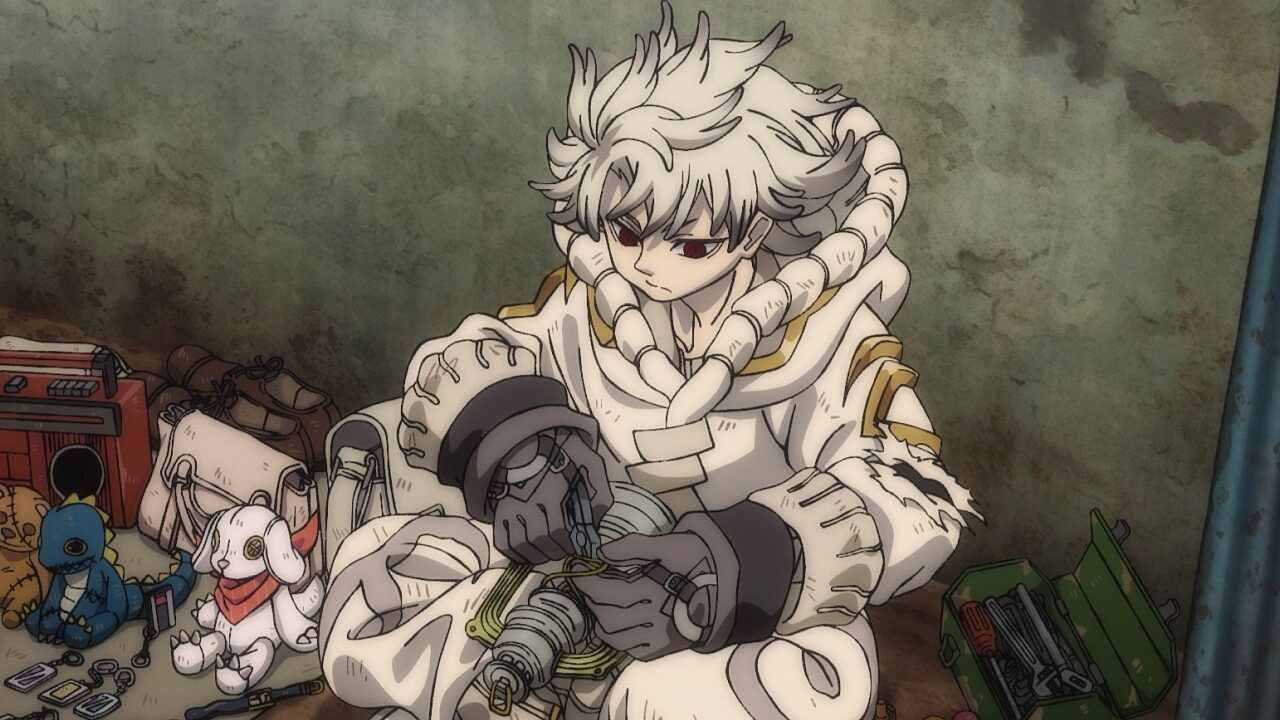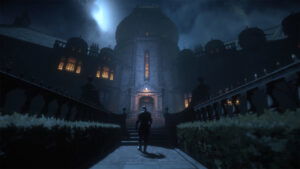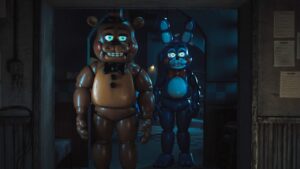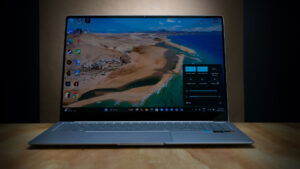Gachiakuta takes place in a floating city where the rich discard their waste—and people—Rudo is framed for murder and thrown into the Pit, where a hellscape of mutated garbage beasts dwell. To survive, he must wield a new power and join the rogue Cleaners on The Sphere. Rudo doesn’t just aim to battle monsters, but the corrupt who cast him into Hell.
I craved to see more episodes! Gachiakuta is slated to be the next major shonen anime to sweep the world, with 24 episodes lined up for season 1. The first season will be split into two cours/parts, streaming on Crunchyroll. I wish I could see all the episodes early at Anime Expo 2025, but two episodes are enough to either sink your teeth into this world or give up on an artistic masterpiece.
One of the coolest designs from the first few moments of Gachiakuta episode one was the aesthetic design. The white and gold concept with refined trimmings to accentuate the characters’ clothing was a smart choice. It gave off a French/European vibe, somewhat similar to Expedition 33: Clair Obscur’s world presents or how Piltover characters looked in Arcane—especially the upper-class police called the Apostles.
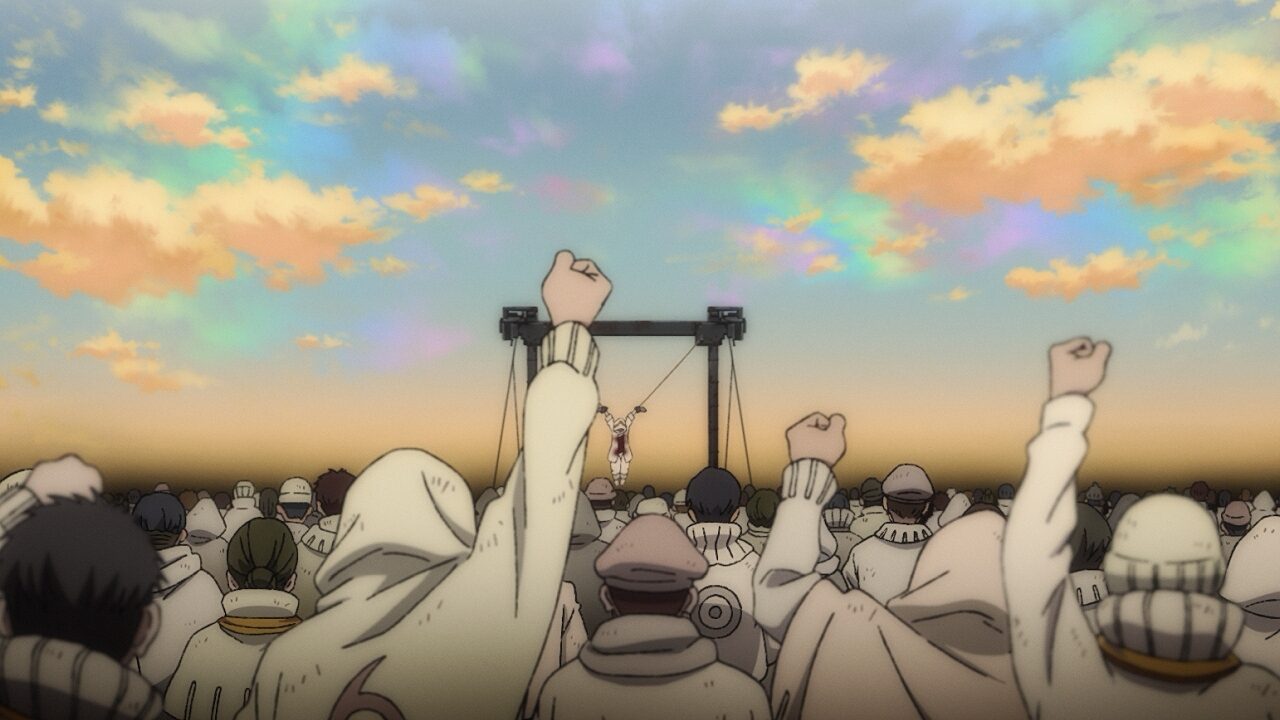
What is ironic is that both series have a geographical and socioeconomic divide in their respective worlds. In Arcane, it has Piltover/Zaun (the Undercity). In Gachiakuta, the world is divided by walls, a stark contrast shown between the upper class behind the white walls and the slums covered in a muddy brown.
However, there were subtle artistic choices in episodes one and two. In episode one, the slums are brown, but the colour of the sky has soft rainbow notes. It was like seeing that rainbow effect in bubbles or when oil and water mix. This was like a hidden, symbolic message that the upper class is dull with its white walls, whereas the slums contain more colour and imagination.
“One of the coolest designs from the first few moments of Gachiakuta episode one was the aesthetic design.”
From a storytelling and pacing perspective, Gachiakuta episode one was a well-structured intro to this world. It felt too wholesome in the first half, so I saw the darker themes coming. Still, the pacing doubled down on the harshness of this world when even Rudo’s love interest, Chika, did not believe Rudo.
The standout animation in Gachiakuta episode two was the trash monsters, seeing the 2D and 3D animation blend. The details of the various trash parts that made up the trash monsters showed the great lengths the animators took the time to show off specific parts of trash sticking out of the creatures.
Sometimes, 3D animation could be a bit too distracting in certain anime shows, but Gachiakuta found a smooth balance. The camera work sold the intensity of the fights, along with the great animation. The fight choreography of this first fight was amazing, seeing Rudo pick up various pieces of trash to fend off the giant trash monsters.
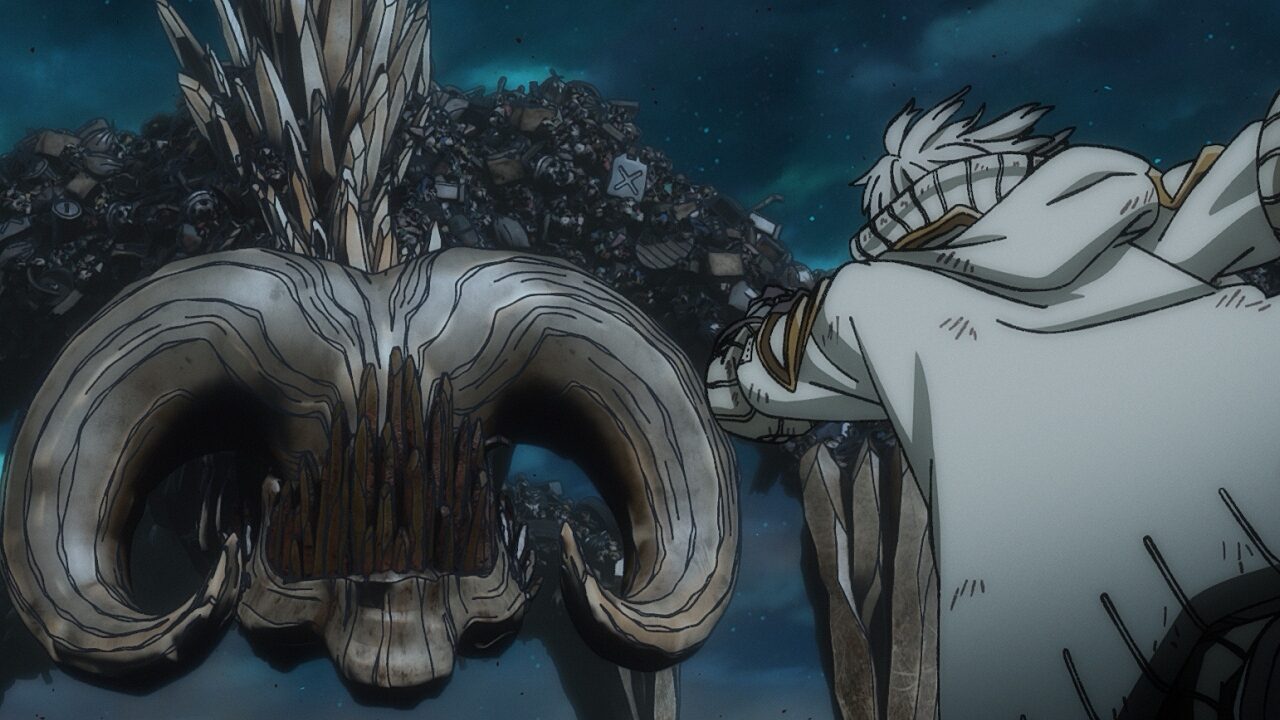
Gachiakuta’s fight choreography style was reminiscent of Jackie Chan films or fighting games like Injustice, where the environment feels like it is a character because the main characters use the environment as a weapon. Even when Enjin showed up with his mask and umbrella weapon, the way Enjin used his weapon was uniquely different from traditional weapons.
For anyone craving a new shonen revenge story, Gachiakuta could be the fix.
What Kei Urana and Hideyoshi Andou crafted in this story was unique from the very first moment episode one rolls. By episode two, Gachiakuta sinks its teeth into the viewer’s mind with cool visuals and cool characters. Here is to hoping the next 22 episodes deliver the same hard-hitting elements that were engaging from the first two episodes.
